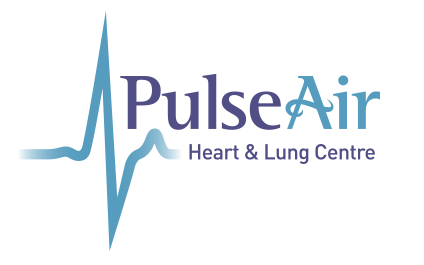November is Lung Cancer Awareness Month, a critical time to shine a light on this devastating disease that affects millions of people worldwide. At PulseAir Heart and Lung Centre, we're committed to raising awareness about lung cancer, its risks, symptoms, and treatment options. In this blog, we'll delve into the world of lung cancer, exploring what you need to know to stay informed and take control of your lung health.
The Facts About Lung Cancer
Lung cancer is the leading cause of cancer deaths worldwide, accounting for nearly 1.8 million deaths annually. In Canada, it's estimated that over 28,000 people will be diagnosed with lung cancer in 2022, and approximately 21,000 will succumb to the disease.
Risk Factors for Lung Cancer
While lung cancer can affect anyone, certain risk factors increase the likelihood of developing the disease. These include:
- Smoking: Smoking is the leading cause of lung cancer, responsible for about 80-90% of all lung cancer deaths.
- Secondhand smoke: Exposure to secondhand smoke can increase the risk of lung cancer.
- Radon: Radon is a radioactive gas that can accumulate in homes and buildings, increasing the risk of lung cancer.
- Asbestos: Exposure to asbestos can increase the risk of lung cancer and other respiratory diseases.
- Family history: Having a family history of lung cancer can increase the risk of developing the disease.
- Air pollution: Exposure to air pollution can increase the risk of lung cancer.
Symptoms of Lung Cancer
The symptoms of lung cancer can be subtle and may not appear until the disease is advanced. Common symptoms include:
- Coughing: A persistent cough that doesn't go away
- Chest pain: Pain or discomfort in the chest area
- Shortness of breath: Feeling winded or short of breath
- Fatigue: Feeling tired or weak
- Weight loss: Unexplained weight loss
- Coughing up blood: Coughing up blood or rust-colored mucus
Screening and Diagnosis
Early detection is critical in lung cancer treatment. Screening tests can help identify lung cancer in its early stages, when it's more treatable. These tests include:
- Low-dose computed tomography (LDCT) scans: LDCT scans use low doses of radiation to create detailed images of the lungs.
- Sputum cytology: Examining a sample of mucus from the lungs to look for abnormal cells.
Treatment Options for Lung Cancer
Treatment options for lung cancer depend on the stage and type of cancer, as well as the patient's overall health. These options include:
- Surgery: Removing the tumor and affected lung tissue
- Chemotherapy: Using drugs to kill cancer cells
- Radiation therapy: Using high-energy radiation to kill cancer cells
- Targeted therapy: Using drugs that target specific cancer cells
- Immunotherapy: Using the body's immune system to fight cancer cells
Conclusion
By staying informed about lung cancer and its risks, you can take control of your lung health and reduce your risk of developing this devastating disease. Remember to get screened, quit smoking, and stay aware of your lung health. Together, we can make a difference in the fight against lung cancer.
Learn More About PulseAir Heart and Lung Centre
At PulseAir, we offer a range of services and treatments to help you manage your lung health, including pulmonary function testing, sleep studies, and cardiopulmonary rehabilitation. To learn more about our services and how we can help you, visit our website at https://pulseair.ca/.


